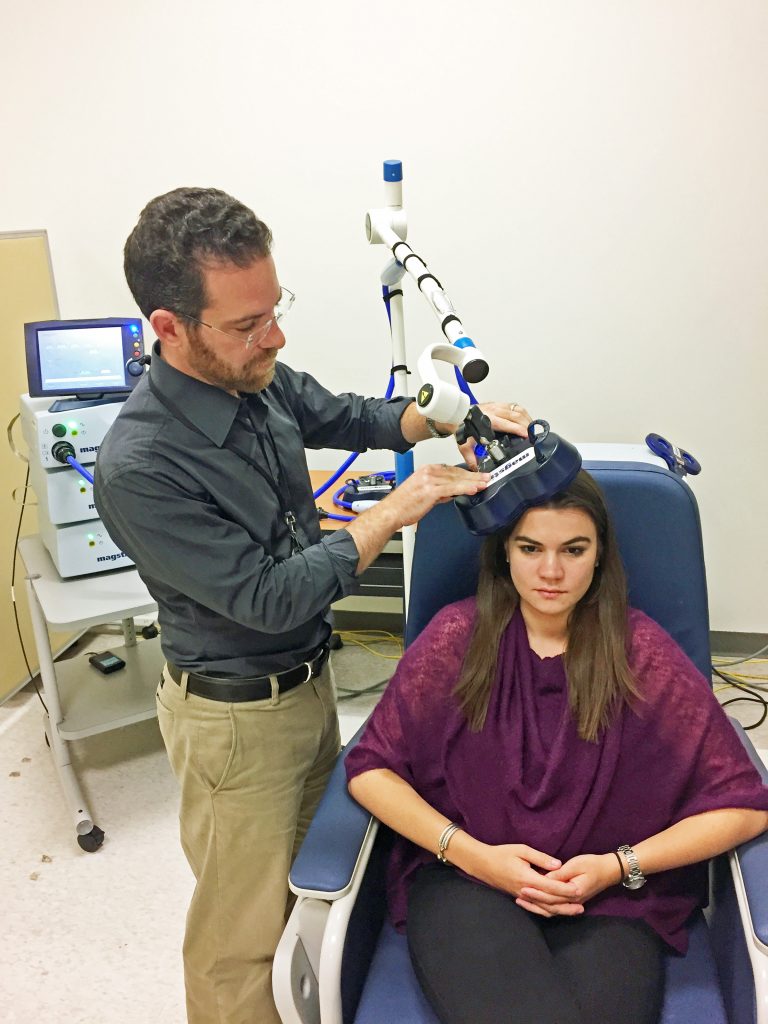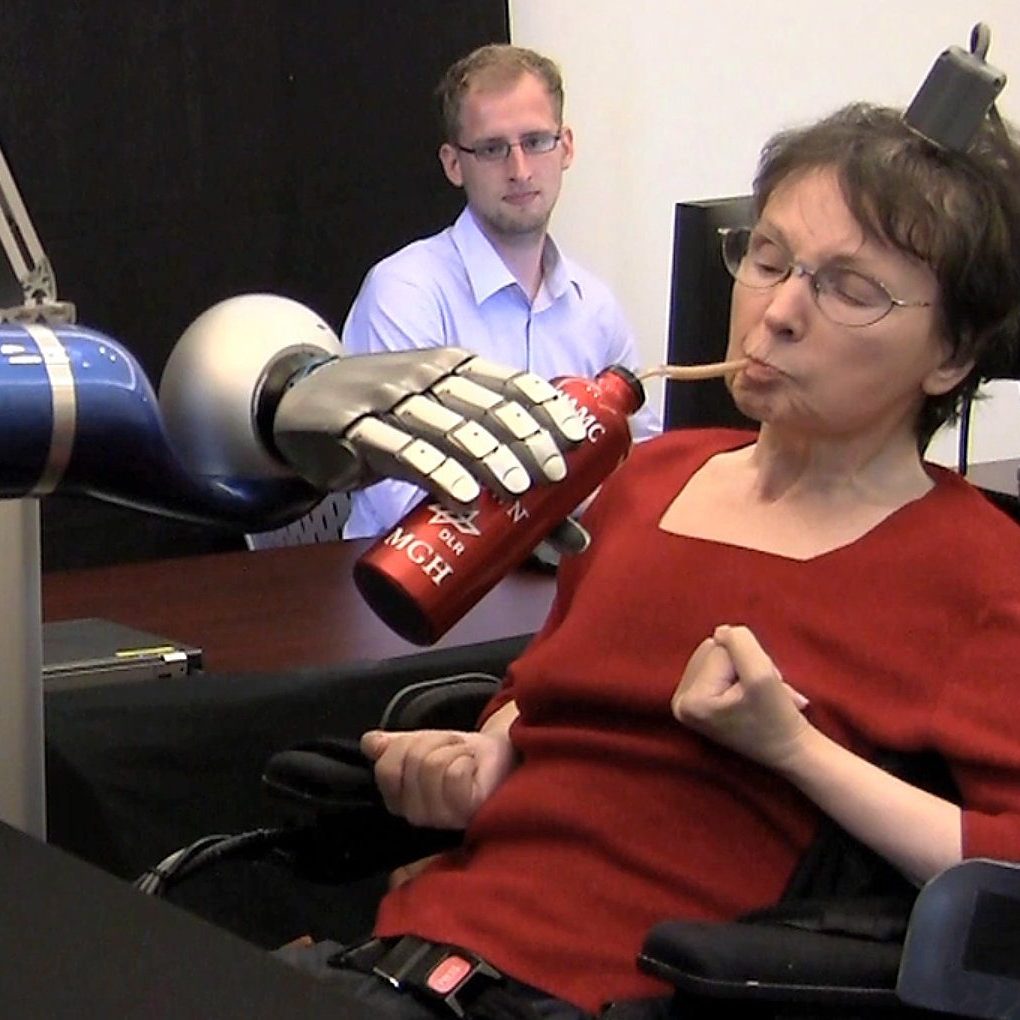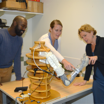A CfNN Focus Area: Research in Restoring Mental Health employs noninvasive neurotechnologies such as transcranial magnetic stimulation (TMS) and transcranial electrical stimulation (using direct or alternating current; tDCS or tACS, respectively) to understand and change abnormal brain circuit functioning in a group of neurobehavioral disorders that impose health and functional burdens on Veterans, including post-traumatic stress disorder (PTSD), depression, suicide, chronic pain, and obsessive-compulsive disorder (OCD). To map brain circuit function in these conditions we use advanced MRI and electroencephalography methods in collaboration with Neuromodulation and Imaging and Recording, Decoding, and Computational Neuroscience, with implementation and deployment guided by Assessment, Outcome Measurement, and Implementation.

Some Affective and Cognitive Health Research Projects:
Research demonstrating that non-invasive brain stimulation, coupled with virtual reality or on its own, can improve PTSD: Research has demonstrated that tDCS, combined with virtual reality exposure, can improve PTSD (van ‘t Wout-Frank et al., 2019); these results led to a Merit-funded study (I01 RX002450) to test this intervention more broadly. FA-2 also conducted the first randomized controlled study of a novel TMS paradigm (intermittent theta burst) in Veterans with PTSD (Philip et al., 2019). Recent awards of VA equipment grants (IS1 BX004779) will permit the first-in-human testing of low intensity focused ultrasound for depression, anxiety and PTSD.
Therapeutic TMS suggests that the antidepressant response to TMS can be predicted by specific patterns in brain connectivity before treatment for depression: Ongoing work on therapeutic TMS suggests that the antidepressant response to TMS can be predicted by specific patterns in brain connectivity before treatment (Philip et al., 2018; further funded by I01 RX003152). Furthermore, FA-2 research demonstrated that data-driven, machine learning approaches can identify patients most likely to respond to TMS (Zandvakili et al., 2019), and help clinicians determine which patients are most suitable for TMS (Berlow et al., 2019).
Identification of neural circuits underlying risk of suicide: Investigators have identified neural circuits underlying suicide in PTSD (Barredo et al, 2018), and ongoing work is identifying how neuroimaging can identify those at risk for suicide (IK2 CX001824). In collaboration with local health services researchers, we launched the first study to combine brain stimulation and psychotherapy to reduce suicide in high-risk Veterans (I01 HX002572).
Research evaluating the emotional (affective) component of chronic pain: Research evaluating the emotional (affective) component of chronic pain, a clinical feature which magnifies pain-related disability; FA-2 research demonstrated that tDCS can improve pain tolerance (Mariano et al., 2015). Other FA-2 research focused on the use of tACS to modulate pain-related somatosensory perception (Sliva et al., 2018).
Investigations of Deep Brain Stimulation for individuals suffering with intractable illness and the use of tDCS to modulate brain regions implicated in OCD: Investigators completed 12-month data collection in a multicenter NIH-supported trial of deep brain stimulation for individuals suffering with intractable illness (Greenberg, PI) and are contributing the data analyses. Ongoing work also indicates the use of tDCS to modulate brain regions implicated in OCD.












